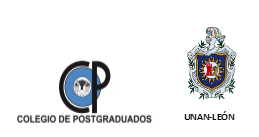Caracterización de plantas melíferas en la producción y conservación de las abejas
DOI:
https://doi.org/10.5377/ribcc.v8i15.14307Palabras clave:
Miel, Ecosistemas, Apicultura, Eco intensificacion, Planta meliferasResumen
El objetivo del presente estudio se centró en caracterizar las plantas melíferas que contribuyen en la producción y conservación de las abejas. La investigación se desarrolló con base en la delimitación del área de muestreo, la revisión de información reportada en la literatura especializada, la identificación taxonómica de especies vegetales, Se trabajó con 12 productores apícolas de los municipios de Jinotega, San Rafael, Yalí, El Cuá. Como resultado del estudio se identificaron 50 plantas pertenecientes a 10 tipos de familias diferentes, destacándose así la familia de las Fabaceae, también se determinó que existe una mayor floración entre los meses de marzo - mayo, y de septiembre - octubre la floración disminuye en todas las zonas. Es importante diversificarlas con especies que sean multiflorales, debido a que se han ido perdiendo con el paso del tiempo a través de diferentes acciones antropogénicas como el despale, cambio de uso de suelos, cambio climático y uso indiscriminado de insumos químicos. Por otro lado, se identificó que las abejas prefieren las zonas de diversas plantas pertenecientes a las áreas de cultivos en asocios, debido a que sus flores tienen un color y olor llamativos para las abejas, además que poseen una mayor cantidad de polen y néctar, por ende se tiene un aumento de polinización, contribuyendo así a la conservación de las diferentes especies en la zona y mejorando rendimientos de fructificación de los diferentes cultivos presentes en el área productiva.
Descargas
1101
HTML 0
Publicado
Cómo citar
Licencia
Derechos de autor 2022 Rev. iberoam. bioecon. cambio clim.

Esta obra está bajo una licencia internacional Creative Commons Atribución-NoComercial-CompartirIgual 4.0.
Copyright © Rev. iberoam. bioecon. cambio clim. (Colegio Postgraduados y UNAN-León, Escuela de ciencias agrarias y veterinarias/ Departamento de Agroecología/Centro de Investigación en Bioeconomía y Cambio Climático (CIByCC).







